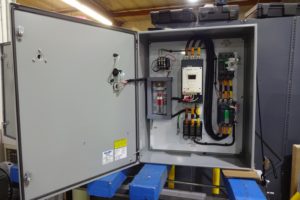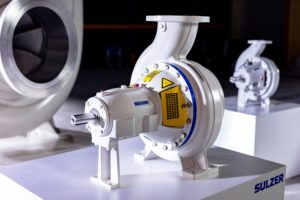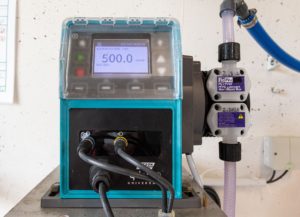Intelligent Pump Systems
With the European pump industry approaching maturity, novel technologies such as intelligent pump systems are set to be the main driver for future growth. Demand for these ‘smart’ pumps is increasing across a wide range of end-user segments such as water and wastewater treatment, building automation, as well as food and beverages.
New analysis from Frost & Sullivan, European Intelligent Pump Systems Markets, reveals that the market generated revenues of $68.5 million in 2005 and this is likely to reach $230.3 million in 2012.
“The growing uptake of intelligent pumps in these end-user segments is largely due to stringent European Union (EU) legislations on environmental and energy issues,” notes Frost & Sullivan. “Also, the expansion in eastern Europe is likely to open up highly lucrative market opportunities.”
The EU has been implementing several directives through national legislation to ensure that ambient, potable water and wastewater meet acceptable quality standards as well as to raise the rate of domestic sewage connection.
Other directives such as 2002/91/EC highlight the need to improve energy performance in buildings while considering outdoor and indoor conditions as well as cost effectiveness. Enhancing energy efficiency is likely to become mandatory for all new and renovated buildings measuring more than 1,000 square meters.
Thus, changing legislation is creating demand for advanced equipment that can meet these new requirements. With end users under pressure to comply with strict energy and environmental policies, the focus is increasingly on acquiring more reliable and sophisticated pumps that can reduce energy costs as well as address issues of cavitations and dead heading.
Simultaneously, end users have started taking a more long-term view of pump and total life running costs. Given that the cost of a pump is typically less than 20 percent of the total life costs, end users are beginning to demand higher-efficiency pumps despite their being more expensive because of the considerable future savings that these systems can offer them.
However, this trend is yet to gather significant pace. For now, one of the biggest challenges facing pump manufacturers is to educate the end-user base – that extends across several sectors – about the benefits of integrated solutions. This is critical for building the long-term viability of intelligent pumps.
At present, perceived high prices and uncertainties about the actual advantages of utilizing combined pump and control systems are acting as deterrents to investment. End users also need to be convinced that the design of the products is effective enough to meet the various requirements of a broad range of established applications.
“Research and latest pump studies have shown that pump reliability is maximum when operated near the best efficiency point,” says Frost & Sullivan. “Customers have gradually started understanding the benefits of intelligent pump systems and their effectiveness in preventing pump damage in terms of dead heading, cavitations, and dry run.”
This is due to the efforts of many large multinational companies to raise awareness and product knowledge through demonstrations, seminars, as well as pump show events. Companies are also working on developing and making value-added changes to pump designs in order to sustain end-user interest.
If you are interested in a virtual brochure, which provides manufacturers, end users, and other industry participants an overview of the latest analysis of the European Intelligent Pump Systems Markets, then send an e-mail to Magdalena Oberland, Corporate Communications, at magdalena.oberland@frost.com, with your full name, company name, title, telephone number, fax number, and e-mail address. Upon receipt of the above information, an overview will be sent to you by e-mail.
Source: Frost & Sullivan







